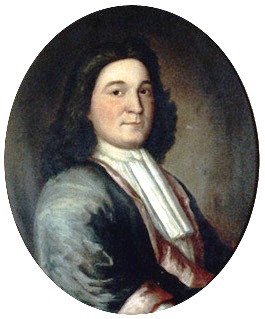Battle of Chedabucto facts for kids
Quick facts for kids Battle of Chedabucto |
|||||||
|---|---|---|---|---|---|---|---|
| Part of the King William's War | |||||||
 Sir William Phips |
|||||||
|
|||||||
| Belligerents | |||||||
| Acadia | |||||||
| Commanders and leaders | |||||||
| William Phips Cyprian Southack John Alden |
Dauphin de Montorgueil | ||||||
| Strength | |||||||
| 88 soldiers | 12 soldiers | ||||||
| Casualties and losses | |||||||
| Unknown | Unknown | ||||||
The Battle of Chedabucto happened on June 3, 1690. It was fought at Fort St. Louis in a place called Chedabucto. Today, this area is known as Guysborough, Nova Scotia. This battle was part of a bigger conflict called King William's War (1689–1697).
Sir William Phips led soldiers from New England in this battle. Their goal was to take control of Acadia, a French colony. They planned to capture its capital, Port Royal, and other important places like Chedabucto. These attacks were very intense. They made many Acadians lose trust in the New Englanders. This made it hard for them to get along peacefully later on.
Why the Battle Happened
Before the battle, a French merchant named Clerbaud Bergier had a special right to fish in Acadia. In 1682, a company built Fort St. Louis to protect this fishing business. The main fishing port was at Chedabucto Bay. About 50 fishers worked there in 1686. Dauphin de Montorgueil was in charge of Fort Saint-Louis.
Not everyone agreed with Bergier's fishing rights. Other Acadian merchants, like Governor Michel Leneuf de la Vallière de Beaubassin, sold fishing permits to people from New England.
New England had different reasons for attacking Acadia. Some people hoped the attacks would lead to good relationships with the Mi'kmaq people and Acadians after the war. Others just wanted to punish them. They believed the Acadians had helped in recent attacks against New England.
The Battle of Chedabucto
Sir William Phips was leading an expedition to capture Port Royal, the capital of Acadia. As part of this plan, Phips sent Captain Cyprian Southack to Chedabucto. Captain Southack had 80 soldiers with him. Their mission was to destroy Fort Saint-Louis and the French fishing operations nearby.
Louis-Alexandre des Friches de Meneval was at Fort Saint-Louis with only 12 soldiers. Unlike the soldiers at Port Royal, the defenders at Fort Saint-Louis fought back. They defended the fort for more than six hours. But eventually, fire bombs burned the fort to the ground.
Captain Southack's forces destroyed a huge amount of fish, worth about 50,000 crowns. The soldiers defending the fort eventually gave up. They were allowed to leave honorably and were sent to Plaisance, the French capital in Newfoundland.
What Happened Next
After the battle, Captain John Alden (sailor) was sent by Phips to raid other areas. He attacked Cape Sable, which is in present-day southwest Nova Scotia. He also raided villages around the Bay of Fundy, like Grand Pre and Chignecto.
France regained control of Port Royal the next year. Joseph Robineau de Villebon, who had worked with Meneval, returned from France. He helped the French take back authority in Port Royal.
The Company of Acadia faced many problems and eventually closed down in 1702. Fort Saint-Louis was used again at Chedabucto for a time. However, the community was later destroyed in an event called the Squirrel Affair in 1718.

